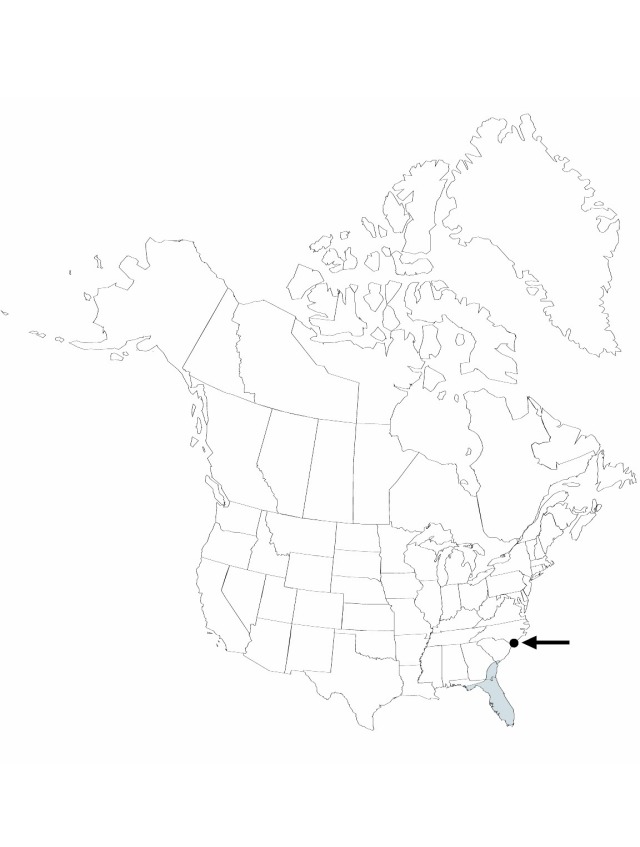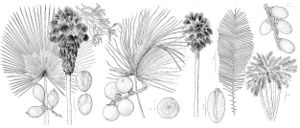Sabal palmetto
in J. J. Roemer et al.,Syst. Veg. 7(2):1487. 1830.
Stems usually aerial, 20–35 cm diam. Leaves 15–30, strongly costapalmate, bearing threadlike fibers between segments; hastula acute to acuminate, 5.3–18 cm; segments 55–120 × 2.5–4.2 cm; apices bifid2-cleft. Inflorescences with 3 orders of branching (not counting main inflorescence axis), arching, equaling or exceeding leaves in length. Flowers 4.1–6.7 mm. Fruits black, spheroid, length 8–13.8 mm, diam. 8.1–13.9 mm. Seeds 4–7 mm, diam. 5.4–9.7 mm diam. 2n = 36.
Phenology: Flowering spring–summer (northern part of range) or year around (southern part of range).
Habitat: Hammocks, pinelands, river banks, dunes, tidal flats
Elevation: 0–40 m
Distribution

Fla., Ga., N.C., S.C., West Indies (Bahamas, Cuba).
Discussion
Sabal palmetto grows in a variety of habitats, from pine and oak associations to coastal dunes and to coastal marshes (K. E. Brown 1976; S. Zona 1990). Like S. minor, it is polymorphic at the extremes of its range; however, differences in stature, size, and trunk characteristics are not of a magnitude to warrant taxonomic rank. In the pine rocklands of Dade County, Florida, S. palmetto may flower and fruit with little or no aboveground trunk.
Although Sabal palmetto is a moderately important honey plant, its greatest economic use is as an ornamental.
